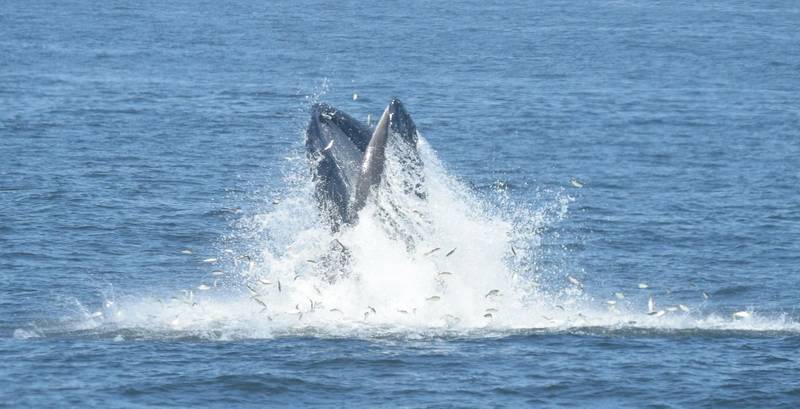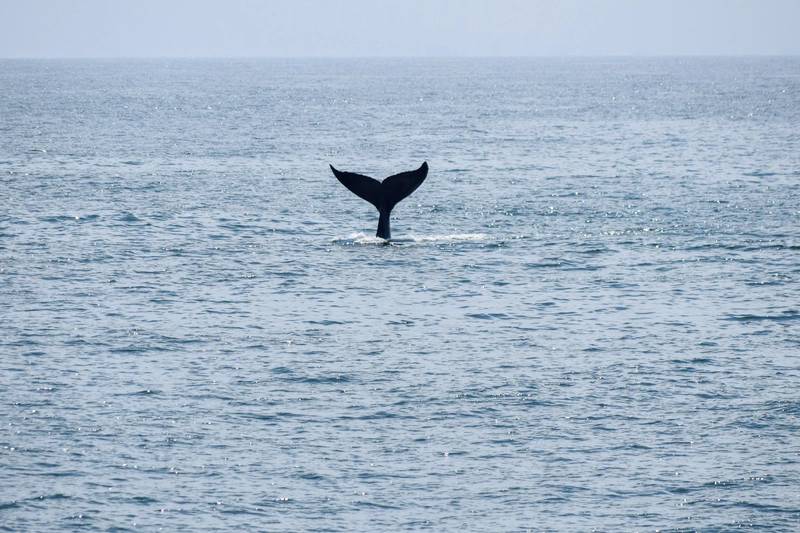Dealing with the Whale in the Bight
This is going to be about whales, but it will actually be an engineering discussion rather than a nature discussion. Let’s start with an easy truth. Whale deaths due to offshore wind activities is utter nonsense. It has no basis in fact, and is a total fabrication by truly malicious characters.
There, now let’s get into more interesting stuff. Whale deaths caused by humans is a complex issue that will never be solved completely, but, with careful adjustments, can be reduced. There is a possibility that occasionally there are whale COVID style epidemics that cause unusual levels of mortality, but we have to accept that there will also always be whale deaths due to human activity and the vast majority of those deaths are vessel strikes and debris entanglement.
Right now, in the US North East Atlantic, we are actually dealing with two different types of whale mortality that have entirely different drivers and causes. We have North Atlantic right whale mortality and humpback whale mortality.
From a nature conservation point of view, one is quite scary and the other is not so scary.
Let’s talk about right whales first. North Atlantic right whales are incredibly endangered. They were hunted to near extinction because they were the easiest whales to hunt. They were relatively slow and floated after they were killed. Hence their name; right whale. After commercial whaling was shut down in the second half of the last century, there were only a few hundred right whales left in the North Atlantic. There is a much larger South Atlantic population but the two do not intermix because they generally will not cross the equator and also apparently do not like strange whales to breed with. (The North Pacific right whale population is even more endangered)
Contrary to other whale species, which generally have made strong comebacks, the North Atlantic right whale population is not growing and may actually be harmed by global warming. This has resulted in special shipping regulations in the form of speed restrictions to reduce the chance of ship strikes when right whales are in the general area and some fiercely resisted fishing regulations. Despite that, right whales are still being struck by ships and killed by entanglement.
Then there are the humpback whales. Since they were quicker and do not float as well after being killed, they were more difficult to hunt with traditional rowed whaleboats. But especially after WWII, they became fair game with the use of high-speed motorized whale hunters and compressed air to keep them afloat. In 1960 the worldwide population was estimated at only 5000 whales, but with the cessation of commercial hunting, the population has recovered to well over 100,000 and probably many more. (Although there are still a few struggling local populations.)
With regard to human interest, the humpbacks are the stars of the game. They are the whales that sing so well and are fun to watch. Whale watching relies to a very large extent on these whales. Bottom line: Humpback whales are an international win win success story. We have both preserved a wildlife species and created a new industry. Who can argue with that? And it is a big industry, estimated at over $2 billion per year worldwide and, with increasing whale stocks, can be expected to grow in the years to come.
But what about these whale deaths?
It depends, any North Atlantic right whale death is a near disaster and if we want to preserve the North Atlantic right whale population, we will have to be extremely vigilant and it will require extraordinary and expensive measures.
A single humpback whale death is a different story. It is probably fair to say that nobody would like to see a humpback whale die for no good reason, but it is not inherently a disaster.
Since there is no evidence that offshore wind will have a significant impact on either right or humpback whales with the mitigation measures imposed by BOEM & NFMS, the best way to reduce whale deaths is to prevent vessel strikes and human commerce entanglements. This is quite similar to how we deal with wildlife management ashore, and quite frankly there are many land animals such as deer, moose, cougars, wolves and turtles that get in the way of transportation and commerce. A dead deer or wolf along the side of the road is factually no different than a dead entangled whale on a beach. Although in the US North East, a dead wolf may be cause for great concern, while we would probably try to ignore a dead deer.
Regardless, wild animals, and occasionally even humans, will die and the trick is to manage that downside as humanely as possible. (And hunting (culling) may even be the most humane solution). Human/wildlife interactions are a reality, and if that is the case, the only solution is to make the interaction as meaningful and painless as possible and it is an inherent technical fact that, therefore, there will be no single solution. There will only be partial solutions that get optimized through careful balancing of a wide variety of push and pulls, and careful analysis without distractions by bad data and lies.
That is complicated, and requires much more space to fully discuss than is available in this column, but some actions, like reducing entanglement trash, have no downside and should be pushed hard.
Increased situational awareness can also be very effective. Just knowing where whales are present can be very helpful in allowing crews to adjust course and speed. AIS can be of great help in that regard. Fitting right whales with AIS transmitters, if technically feasible, would be an excellent approach to avoiding collisions with right whales.
Noting that humpback whales are not as “valuable” and much more numerous, fitting them with AIS may not make sense, but recording whale locations (including right whales) in real time using AIS would be of great help. This could be accomplished with the addition of a simple record button on a ship AIS. A ship’s crew sees whales, pushes the button when they pass the whales, and chart plotters on ships in range display a whale location just like it displays a ship with AIS. This whale position will gradually fade once it gets older, so the screen does not get overloaded, but the data can be stored and processed forever. This will provide somewhat messy data because whales move, but such data can provide a lot of insight in the long run and is an easy message to a following ship that they need to keep an eye out when they pass through an area where whales have been spotted. Not every watch stander would bother to do this, and obviously it would not work at night, but, in this case, partial data is better than no data at all. (There is partial data out there. NOAA provides right whale locations, but it is an unintegrated website whalemap.org, and there are also private companies that provide whale tracking services.)
There are a substantial number of vessels out there that would actually be interested in hitting the button whenever they see a whale. A whale watching boat can even hit the button whenever they see a whale surface and it would provide a great track for further research and analysis. Unfortunately, I have been told that there are whale watching operators who actually turn off their AIS to keep competing operators from knowing where the whales are. This should be very strongly condemned, because the AIS track of a slow-moving whale watching vessel already signals to other vessels that there are whales in the area and that they should pay closer attention. Moreover, sharing whale locations between whale watching operators reduces CO2 emissions since much less time and fuel is wasted looking for whales independently. Taking turns unnecessarily wasting fuel is particularly uncool if you are in the environmental business.
Who else would provide good whale tracking data with this system? How about the offshore wind vessels, which, by permit obligations, are required to carry whale observers. Yes, if we do not stop offshore wind development, there will be more whale observers, which, with proper technology, will reduce the possibility of vessel strikes for all. Situational awareness. Gotta love it.
For each column I write, MREN has agreed to make a small donation to an organization of my choice. For this column I select Gotham Whale, New York City’s own whale research and advocacy organization. www.gothamwhale.org
Image Copyright NMHA


